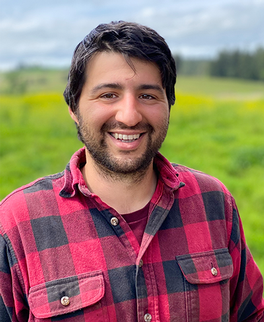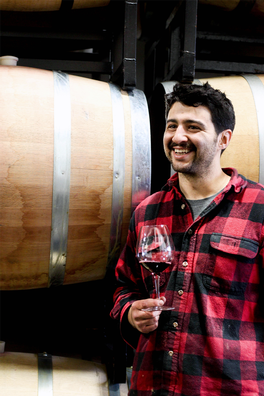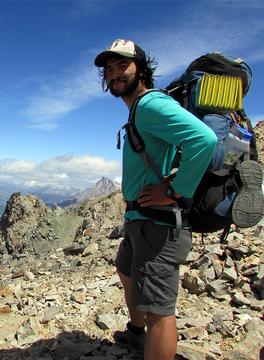Larry Stone's Duck Recipe
This recipe is quite simple and perfect for a wide range of Pinot Noirs and terrific with complex or mature wines as the seasoning subtly enhances the flavors of the dish rather than fighting them. My version below was adapted from Liberty Duck Farm’s recipe.
Purchase a high-quality, plump duck breast - one per person. I buy them online from D'Artagnan and when I lived in Northern California, I purchased them fresh from Liberty Ducks in Sonoma. If there is a good local farm with fresh duck, buy from them.
My recipe is very easy - duck is so flavorful that not much needs to be done.
Ingredients:
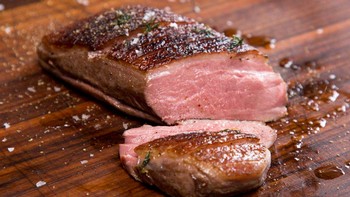
-
High-quality, plump duck breast - one per person (see notes above)
-
Canola or Grapeseed Oil
-
Cardamom
-
Salt & Pepper
Preparation:
I rinse and dry the duck, trim the fat cap at the edges to fit nicely on the meat surface and not hang over. I salt lightly all over, make parallel diagonal slits across the surface of the fat, about 5mm apart. This cuts the surface of the skin and allows the fat to render without curling.
Then coat the duck all over with ample ground cardamom. Air dry it with a fan for around 20 minutes so that the meat and fat are very dry on the surface. Air drying prevents some sticking to the pan and prevents some loss of meat juices.
Take a hot aluminum, cast iron or high-quality stainless-steel skillet or sauté pan (not non-stick) of sufficient size that allows for ample room for each breast. Pre-heat on stove. When hot, drop a little grapeseed or canola oil on the surface of the pan and spread it around by rotating the pan in a circular motion. It should be just enough so that the duck will not stick to the pan before rendering its fat.
Lay the breasts skin side down in the pan. Move breasts around frequently when first getting them in the pan to avoid their sticking. After a few minutes and when the fat starts to render and the skin begins to brown, turn the heat to a medium to medium-high temperature depending upon how hot your range burns. Too hot and the skin will burn, lower is better to have time to let the fat render and leave a thin tasty layer of fat on the breast with a crispy brown to dark black surface.
The idea is to render the fat without overcooking the meat. One could have a can on the side to dump excess duck fat as it melts, but that would be a waste. As the fat renders and starts to build up in the pan, pour the excess fat into a glass container that can be sealed. It may be necessary to go through this a couple of times before the duck is done. This duck fat is delicious to fry potatoes with, collard or mustard greens, broccoli rabe or anything that you may want to cook with bacon fat. It can be frozen and stored for months or kept in the refrigerator for several weeks. This fat will also have a subtle flavor of cardamom.
When the skin becomes dark mahogany-colored and the meat appear to have cooked almost halfway up the side of the breast, then turn over the breasts and finish frying them in a few minutes. If you like your duck breast rare, let it only seem to begin to cook up the sides (you can tell by the change in color of meat from dark red to a brownish white) and then sear meat side down for only a couple of minutes.
Eat the lean slices of duck breast together with the layer of crisp fragrant fat, which tastes and smells a lot like an elevated type of bacon. The combination of the meat and cardamom used as a savory spice is quite compelling with Lingua Franca Estate Pinot Noir, The Plow, or Mimi's Mind. Enjoy!
Photo Credit: 1859 Oregon Magazine
Meet the Team, Part Six
Meet
Brandon Hasart
Vineyard Manager
and the newest addition to the Lingua Franca Team!
Originally from Bend, Oregon, Brandon graduated from the Washington State University with a degree in enology and viticulture. From there he went on to work a harvest in New Zealand and then lived in Casablanca, Chile for a year, where he helped make wine for a small producer specializing in Pinot Noir and Sauvignon Blanc. After a stint as the Assistant Winemaker at Abacela in Southern Oregon, he relocated to the Willamette Valley to shift his focus to vineyard management. Day to day, Brandon works with Thomas, overseeing the LF Estate and Bunker Hill Estate Vineyards and collaborates with the winemaking team's operations, including blending trials. Like many of us here at Lingua Franca, Brandon is in the Valley to pursue the most elusive of all wine grapes, with charm, character and transparency, Pinot Noir.
What were you doing before you got into the wine industry?
"I decided to pursue working in the wine industry while I was still in college. I spent my first two years of school as a pre-vet, animal science major. At one point I was working two part-time jobs, one on the campus orchard and vineyard and one in a vet clinic. I started to realize that I enjoyed myself a lot more while working out in the orchard, and as soon as I realized that I could get a degree in Viticulture and Enology and build a career in the wine industry, I pursued it full force."
Is there a memorable experience that initially drew you and connects you to this work and lifestyle? "One experience that I think back on a lot was on a trip to visit my mom’s family in the Basque country of Spain. My cousins took us out to dinner one night at a cider house in the countryside. That experience of eating a family style meal next to strangers in the barrel hall and filling our glasses straight out of the foudre has been cemented in my mind as a moment when I fell in love with the craft beverage industry. It has always been the combination of agriculture, artisanship and community that draws me to farming and winemaking."
What do you like doing when you aren’t at Lingua Franca?
"When I’m not at work I really enjoy spending time around McMinnville. It’s been a great community to be a part of for the last several years. There always seems to be a backyard cook-out to attend and amazing wines to try. As much as we can, my girlfriend, Mallory, and I love to spend time backpacking in the Cascades and exploring the Northwest."
What are your thoughts on the LF Estate and Bunker Hill Estate Vineyards thus far in the season, since you’ve begun working on them? "I consider myself pretty lucky to get to be a part of the Lingua Franca vineyard as it reaches maturity. There is still so much to be learned on this site, and it will be exciting to see how each block further differentiates itself in the coming years. On the opposite side of the spectrum, it’s amazing to be able to be working with older vines at Bunker Hill, especially in such a unique area as the Salem Hills. Each site has its own challenges and I hope to continue farming them in ways that bring out their best qualities."
Wine Webinar Wednesday
Session 12 :: Understanding US and European Appellations
Wine has been a significant economic force for many regions in Europe for centuries. Since the 1930’s when the first of the modern appellation systems protecting the geographic boundaries and production methods of economically important wines were established in France, the rest of the world’s wine growing regions have adopted and refined appellation definitions to protect the “brand," the reputations of the regions and in many cases the production techniques that define the wines. However, these rules are far from uniform and can be very confusing — especially within Europe — and sometimes define little more than physical boundaries.
In this webinar we’ll explore the various European approaches to wine appellations, how to decipher the wine labels that rely on them, and how the US AVA system compares to their European counterparts.
This webinar is now available to Lingua Franca Club Members only.
Please click here to access the Club Member Webinar Archive Page.
Meet the Team, Part Five
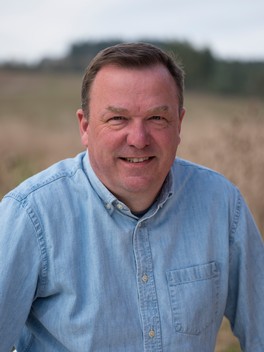
Meet
Sam Schmitt
CS, WSET3, CWE
Director of Operations
If you've joined any of our weekly Wine Webinar Wednesday presentations, you may already be well acquainted with Sam. A native of the Midwest, Sam holds a Bachelor’s Degree in Theoretical and Mathematical Physics from Butler University, and a Master’s Degree in Business Administration from Indiana University.
An avid traveler and wine enthusiast, Sam has explored wine regions throughout Europe and the U.S. His travels ultimately led him to establish roots here in the Willamette Valley and shift his focus exclusively to the wine industry after living in Scottsdale, Arizona, where among other things, he decided to open a wine bar. He has since become a CMS Certified Sommelier, a SWE Certified Wine Educator, and is currently pursuing the WSET Diploma.
"Running the wine bar is what really got me hooked on changing careers to get into the wine industry professionally.”
What were you doing before you got into the wine industry? "I was a consultant to the global pharmaceutical industry specializing in Sales and Marketing strategy, Clinical Trial implementation, Leadership Development and other professional training programs for about 25 years. Some of that morphed into creating an event production, graphics, and visualization development company for large corporate events. I also founded and ran a wine bar in Scottsdale, AZ in the middle 2000's. Running the wine bar is what really got me hooked on changing careers to get into the wine industry professionally."
What was your "epiphany" wine and do you remember that moment?
"Like it was yesterday! I was having dinner with the partners of the consulting firm I worked for at the time in 1995. The managing partner was a wine guy and he ordered a bottle of 1990 Caymus Cabernet Sauvignon. Up until that time, my go-to wines were Bartles & James and White Zinfandel! That glass of Caymus set off all kinds of fireworks in my head. I'd never tasted anything that was so exciting and complex. Needless to say, I was hooked and never looked back. Joey Harrington was kind enough to gift me a bottle of 1990 Caymus from his cellar last year — it's now displayed in a place of honor in my cellar at home."
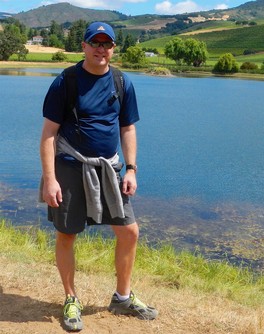 What is your favorite go-to wine accessory at home?
What is your favorite go-to wine accessory at home?
"I couldn’t have completed any of my wine certifications without a Coravin. It’s an indispensable tool for enjoying just a glass without feeling guilty about pulling the cork. High quality glassware is a very close second."
What are you enjoying drinking these days?
"Having recently visited Spain, I’m drinking a lot of Rioja and Ribera del Duero right now. We visited quite a few bodegas while we were there, but the two standouts were Marques de Murrietta in Logroño, Rioja and Vega Sicilia in Ribera de Duero. Murrietta’s 2015 Rioja Reserva and our 2018 Lingua Franca Estate Chardonnay have gotten a lot of 'glass time' since we’ve returned."
Wine Webinar Wednesday
The Geologic History of the Willamette Valley and its AVAs
Winegowing in the Willamette Valley began just 55 short years ago when David Lett planted the first vineyard in the nascent volcanic soils of the Dundee Hills. From these humble beginnings the Willamette Valley now boasts more than 590 wineries and over 750 vineyards with more than 24,000 acres under vine. In this time the Willamette Valley was formally established in 1984 followed by several nested AVAs in the early 2000’s with the most recent addition just last year.
In this webinar we will discuss the geologic history of the Willamette Valley, the geologic events that have shaped the area, the history of the wine region and take a tour of the nested AVAs and discuss their individual terroir characteristics and influences on the grapes and wines.
This webinar is now available to Lingua Franca Club Members only.
Please click here to access the Club Member Webinar Archive Page.
